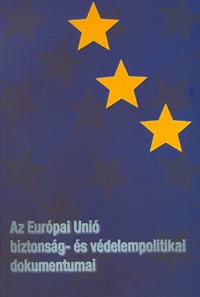Ouvrage collectif
A la base des contradictions de la politique étrangère, de sécurité et de défense de l’Union européenne, on trouve une ligne de partage à trois niveaux. Les Etats membres se rangent de l’un ou de l’autre côté de cette ligne de partage suivant leur vision sur le contenu de l’intégration, les relations transatlantiques et l’évolution souhaitable des relations internationales (y compris la place et le rôle de l’Europe).
L’opposition entre les conceptions d’« Europe-supermarché » et d’« Europe-puissance » se retrouve dans le domaine des relations transatlantiques dans le clash entre la subordination alliée d’une part et la recherche d’autonomie de l’autre. Sur le plan des relations internationales ce même clash oppose ceux qui proposent un pôle transatlantique unique et ceux qui sont en faveur d’une Europe-contrepoids, acteur indépendant, à part entière, dans un monde multipolaire.

Après ce constat de base, la présentation de la politique de sécurité et de défense de l’Union commence par la clarification de quelques malentendus (loin d’être innocents), concernant le lien entre PESC et PESD ou l’IESD et la PESD. Le bref aperçu historique ensuite distingue nettement les périodes avant et après le « pseudo-accord » de Saint-Malo. La déclaration de Saint-Malo, focalisée sur le seul point consensuel qui est l’amélioration des capacités opérationnelles européennes, n’a pas résolu du tout le problème de l’incompatibilité des objectifs de ce renforcement des capacités. Pour les Britanniques, ce progrès concret – accepté d’être poursuivi dans le cadre de l’UE pour des raisons d’efficacité – est censé, en fin de compte, renforcer l’arsenal et les capacités de l’OTAN (et augmenter, par ce biais, la valeur des alliés européens aux yeux de Washington). Les Français, par contre, espéraient faire un pas décisif vers une politique de sécurité et de défense indépendante – et, par là, vers une Europe politique capable de s’affirmer comme un acteur international autonome – en incluant la dimension militaire dans le champ d’attraction de l’intégration. En effet, à partir de ce pseudo-accord de Saint-Malo le développement de la défense européenne est entré, en effet, dans une phase dynamique. Néanmoins, c’est moins parce que les deux positions opposées auraient trouvé un prétendu dénominateur commun susceptible de fédérer le reste des Etats membres, mais plutôt à cause de la compétition acharnée qui fut lancée entre les deux visions antagonistes. Tandis que les Britanniques – soutenus par une pression ferme des Américains – ont appelé au renforcement le plus rapide possible des capacités opérationnelles et ont essayé de différer la mise en place de structures institutionnelles censées d’ancrer celle-ci dans le cadre de l’Union, les Français, eux, avaient les priorités inverses. Ils comptaient sur l’expérience, maintes fois vérifiée, selon laquelle une fois un domaine d’activité se retrouve dans le champ d’attraction de l’intégration, il développe une dynamique propre et suit le chemin bien rôdé de l’institutionnalisation. Ils s’attendaient donc à ce que l’encadrement dans les structures de l’UE permettrait d’assurer l’indépendance des capacités à développer et de définir les relations OTAN-EU sur la base d’une coopération entre deux organisations autonomes. Après un aperçu des traités européens des années 1990 et des Conseils européens de juin 1999 à juin 2003 (plus le mini-sommet de Tervuren en avril 2003), la conclusion sur les « Dilemmes politiques et substantiels » attire l’attention sur les deux points clés. Autonomie et flexibilité : toute réflexion et discussion sur la défense européenne s’articule autour (et trébuche sur) ces deux concepts fondamentaux.
Texte complet en hongrois.
(In: Az EU biztonság- és védelempolitikai dokumentumai vol. 1, ed. L. Póti - T. Péter - H. Vincze, Budapest, 2004)
Tags:
défense européenne






















